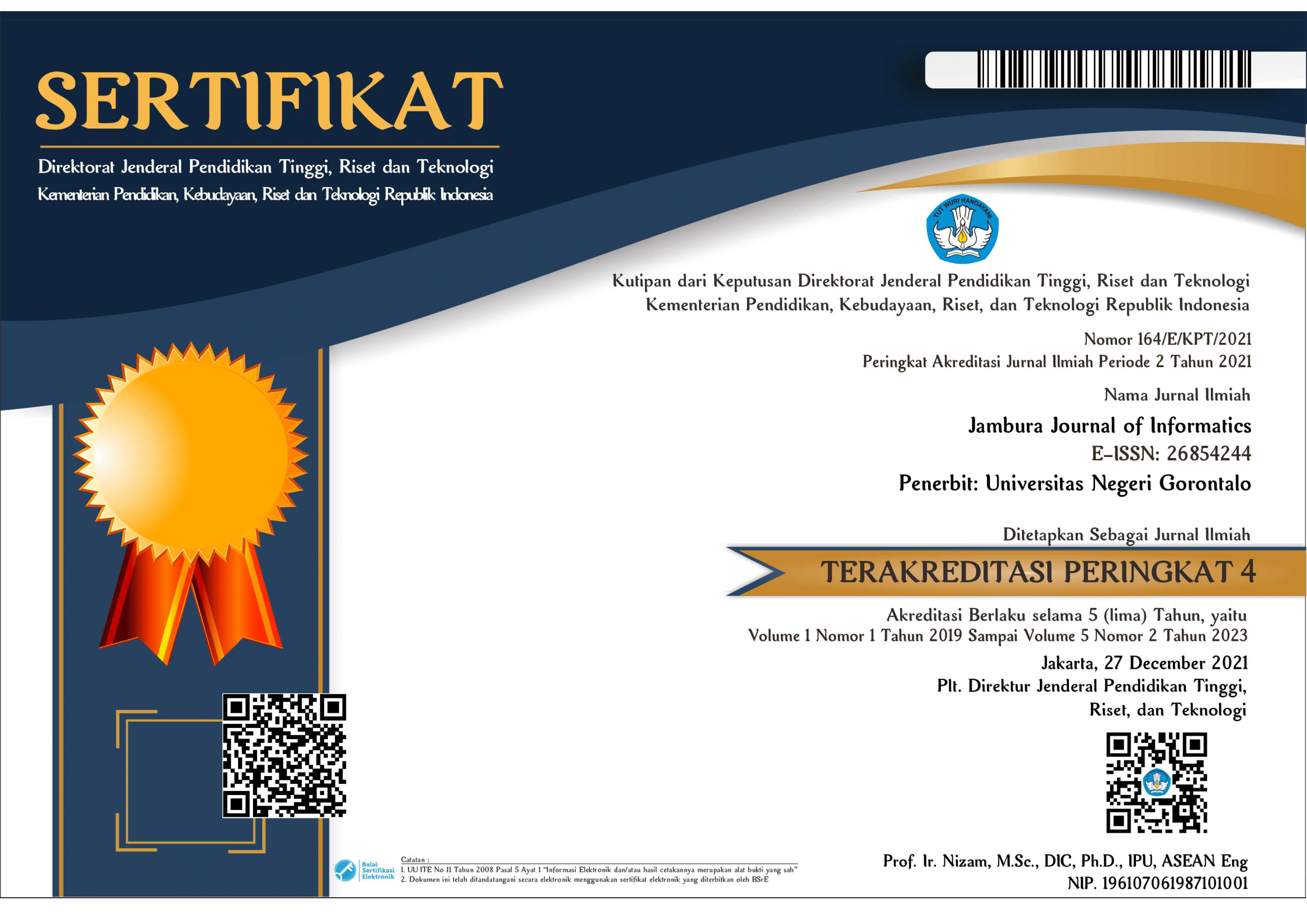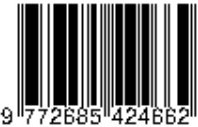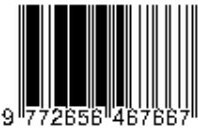Halstead's Complexity Measure of a Merge Sort and Modified Merge Sort Algorithms
Abstract
Keywords
Full Text:
PDF (ENGLISH)References
Balogun, G. B. (2019). A modified linear search algorithm. African Journal of Computer Science & ICT, 12(2), 43-54.
Balogun, G. B., Olanrewaju, B. A., Awotunde, J. B., Oladipo, I. D., & AbdulRaheem, M. (2021). Evaluating the time efficiency of a modified merge sort algorithm. Bulletin of the Science Association of Nigeria. 32. 141-159.
Diego, L. Y. (2020). Time complexity: how to measure the efficiency of algorithms. Retrieved February 2022 from https://www.kdnuggets.com/2020/06/time-complexity-measure-efficiency-algorithms.html
GeeksforGeeks (2020). External sorting. Retrieved May 2020 from https://www.geeksforgeeks.org/external-sorting
GeeksforGeeks. Merge sort. Retrieved May 2020 from https://www.geeksforgeeks.org/merge-sort
Hariprasad, T., Vidhyagaran, G., K. Seenu, K., Thirumalai, C. (2017). Software complexity analysis using Halstead metrics. In International Conference on Trends in Electronics and Informatics ICOEI 2017, Tirunelveli, India. doi: 10.1109/ICOEI.2017.8300883
Hassan, A. A., Kvasnikov, A. A., Klyukin, D. V., Ivanov, A. A., Demakov, A. V., Mochalov, D. M., & Kuksenko, S.P. (2023). On modeling antennas using mom-based algorithms: Wire-grid versus surface triangulation. Algorithms, 16(4), 200. doi: 10.3390/a16040200
InterviewBit. Merge sort algorithm. Retrieved May 2020 from https://www.interviewbit.com/tutorial/merge-sort-algorithm
Irfan, A., Haque, N., Imran, K., Ameen, M.C., & Malook, M.R. (2018). Performance comparison between merge and quick sort algorithms in data structure. International Journal of Advanced Computer Science and Applications (IJACSA), 9(11), 192-195. doi: 10.14569/IJACSA.2018.091127
Maushumi, L. & Uzzal S. (2019). Complexity assessment based on UML-activity diagram. International Journal of Recent Technology and Engineering (IJRTE), 8(2), 6117-6122.
Mohammad S. & Ashok K. (2019). A novel sorting technique for large-scale data. Journal of Computer Networks and Communications, 1(1), 1-7.
Open DSA (2019). CS 3. Data structures and algorithms. External sorting. Retrieved May 2020 from https://opendsa-server.cs.vt.edu/ODSA/Books/CS3/html/ExternalSort.html
Programiz. (2020). Merge sort algorithm. Retrieved May 2020 from https://www.programiz.com/dsa/merge-sort
Rabiu, A. M., Garba, E. J., Baha, B. Y., & Mukhtar, M. I. (2021). Comparative analysis between selection sort and merge sort algorithms. Nigerian Journal of Basic and Applied Sciences, 29(1), 43-48. doi: 10.4314/njbas.v29i1.5
Rajagopal, D., & Thilakavalli, K. (2016). Different sorting algorithm's comparison based upon the time complexity. International Journal of U- and e-Service, Science and Technology, 9(8), 287-296. doi: 10.14257/ijunesst.2016.9.8.24
Senan, S., & Sevgen, S. (2017). Measuring software complexity using neural networks. Journal of Electrical and Electronics Engineering, 17(2), 3503-3508.
Shabaz, M., & Kumar, A. (2019). SA sorting: A novel sorting technique for large-scale data. Journal of Computer Networks and Communications. doi: 10.1155/2019/3027578
Sharma, C. B. Panwar and R. Arya (Diego, 2022). High power pulsed current laser diode driver. In International Conference on Electrical Power and Energy Systems (ICEPES), Bhopal, India, 1(1), 120-126, doi: 10.1109/ICEPES.20A
Taiwo, O. E., Christianah, A. O., Oluwatobi, A. N., & Aderonke, K. A. (2020). Comparative study of two divide and conquer sorting algorithms: Quicksort and mergesort. Procedia Computer Science, 171, 2532-2540. doi: 10.1016/j.procs.2020.04.274
Yadav, R., & Varshney, K. (2014). Brief study about the variation of complexities in algorithmic merge sort. International Journal of Advanced Research in Computer Science and Software Engineering, 4(2), 874-878.
DOI: https://doi.org/10.37905/jji.v5i2.21995
Refbacks
- There are currently no refbacks.
JJIhas been indexed by:

|

|

|

|

|

|

|

|

|
| Editorial Office |
|
Engineering Faculty Building, 1st Floor Jl. Prof. Dr. Ing. B. J. Habibie, Bone Bolango, Gorontalo, 96119, Indonesia. Whatsapp: +6281314270499 Email: [email protected] |

|
|
|












